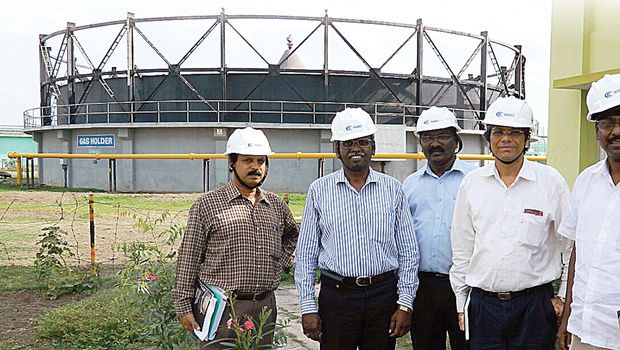Metro Water Keen to Adopt Barc Tech for Sewage
Published on by Water Network Research, Official research team of The Water Network in Technology
The Chennai Metropolitan Water Supply and Sewerage Board (CMWSSB) is contemplating to adopt Bhabha Atomic Research Centre’s (BARC) radiation technology for ‘hygienisation’ of dry sewage sludge generated in various sewage treatment plants in the city.
Already, BARC officials have given a detailed presentation about the utility of the technology and Vikram Kapoor, MD, Metro Water, has expressed satisfaction over thishigh-tech process. The discussion with BARC officials would resume after the elections, the Metro Water sources told City Express.
 “The Ahmedabad Municipal Corporation (AMC) has already entered into an agreement with the BARC for sewage treatment with this technology and construction of the unit has just commenced,” said J Daniel Chellappa, senior scientist, Technical Coordination Wing, BARC, Chennai.
“The Ahmedabad Municipal Corporation (AMC) has already entered into an agreement with the BARC for sewage treatment with this technology and construction of the unit has just commenced,” said J Daniel Chellappa, senior scientist, Technical Coordination Wing, BARC, Chennai.
BARC will provide all technical and scientific support for the installation of this technology unit. Largely sewage sludge is disposed in an unorganised manner resulting in environmental pollution and spread of diseases. The sludge carries a heavy microbiological load and therefore its disposal has been a challenge to the urban development authorities.
It also contains worms, ova, viruses, helminthes and weeds among others. It also contains toxic heavy metals and organic pollutants like pesticides, polyaromatic hydrocarbons and other drugs.
But the sludge is also a rich source of macro (nitrogen, phosphorous and potassium), micro nutrients (zinc, iron, copper and manganese) and organic carbon essential for soil. If the sludge can be treated in an effective and economic way to meet the prescribed norms, it can be recycled by safely using it as manure for agriculture.
High-energy gamma radiation from Cobalt-60 can kill pathogens, reduce odours and degrade the organic and chemical contaminants, thus making the sludge safe for use in diverse applications. “Today all major cities in the country are facing the perennial problems associated with treatment and safe disposal sewage waste. The BARC technology has the potential to change the face of entire sewage disposal system. It is effective in complete hygenisation of the dry sludge in an eco-friendly manner,” said Dr Lalit Varshney from BARC. “One such facility in Chennai is enough to solve all our problems related to dry sewage sludge,” Chellappa said. For instance, most of the important waterways in Chennai like Cooum and Adyar rivers and Buckingham canal are filled with sewage waste. The conventional STPs effectively treat the liquid part of sewage.
“But hygenising the solid component of the sewage, where microbial load is maximum, is posing a major challenge for its safe and scientific disposal,” he added.
Explaining how this pioneering tech works, Chellappa said the solid waste content in sewage was less than 0.1%, and the rest was liquid. The BARC technology targets this 0.1% dry waste, which actually is the feed for all the dreaded pathogens and also a breeding ground for the disease-carriers.
“The dried sludge from the conventional STPs can be transported to the centralised irradiation plant where all the harmful pathogens can be inactivated keeping intact the useful organic matter and nutrients. What we are proposing is a fully automatic irradiation plant that will produce pathogen-free carbon-rich organic manure from the dry sludge,” says Dr Varshney. The scientists at the Indian Council for Agricultural Research (ICAR) have already proved that using the organic manure produced with the BARC technology for cultivation leads to high crop yield. “The manure can supplement the fertilisers and save government the subsidy on urea,” says Dr Varshney.
Source: New Indian Express
Read More Related Content On This Topic - Click Here
Media
Taxonomy
- Wastewater Use
- Raw Sewage
- Sewage Treatment
- Sewage
- Water & Wastewater